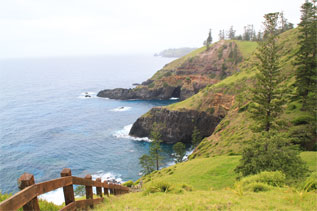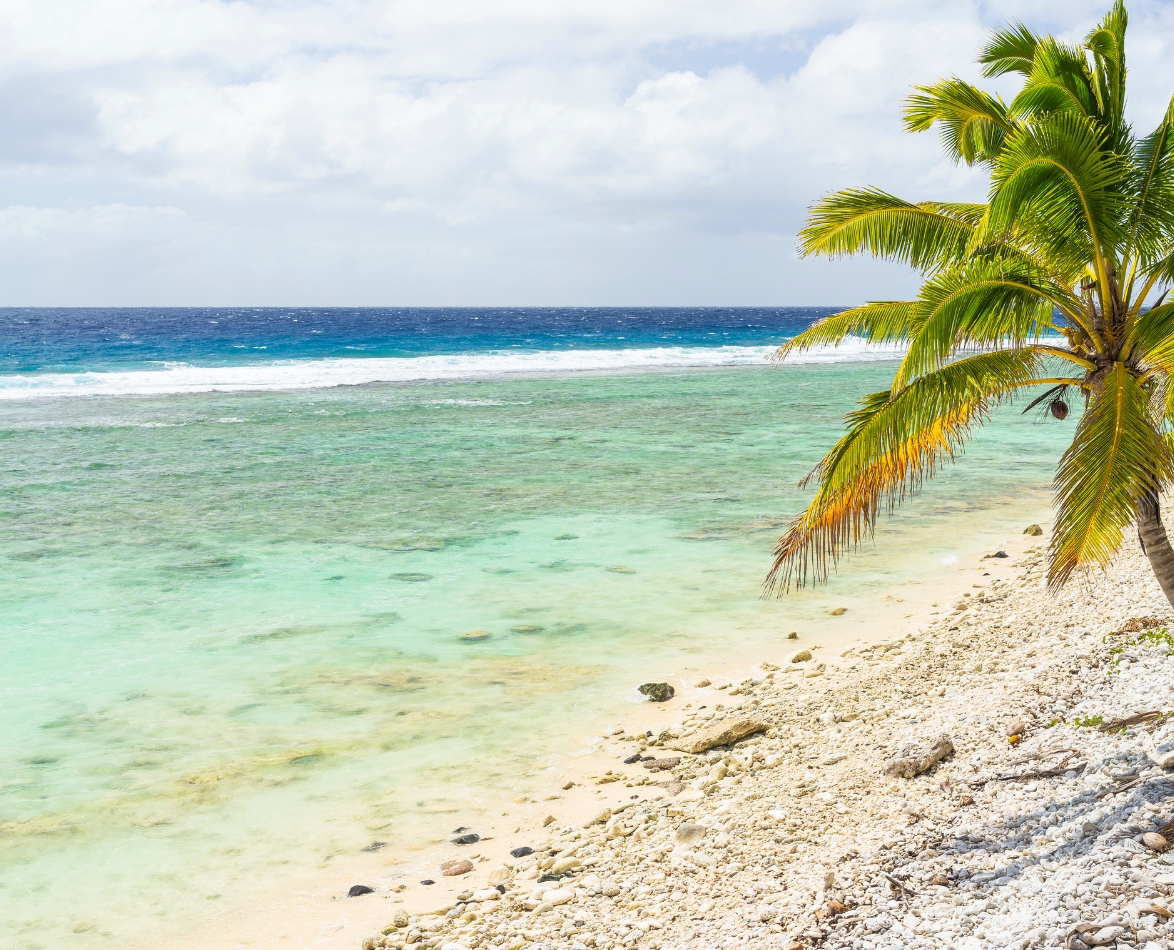Knowing that we had already done most of the popular Pacific spots, our helpful travel agent suggested Norfolk Island.
“Not for me,” said Linda, my very down-to-earth wife. “That place is purely for the newly wed and nearly dead.” However, after some persuasion from the travel lady and a free rental car thrown in with the accommodation, we soon had a deal. The short flight adds to the appeal, and we landed at the tiny airport in brilliant sunshine, where we were greeted by smiling faces and a very relaxed atmosphere.

The craggy coastline makes for a dramatic outlook
Our accommodation was situated down a quiet country lane, where the car awaited us with windows open and keys in the ignition. It seems crime is virtually unknown on the island and people rarely lock their doors. Interesting, considering it served as a penal colony from 1788 to 1814 and 1825 to 1855. It was a year later, on June 8, 1856, before the arrival of the descendants of the Bounty mutineers, whose numbers had outgrown their original home on Pitcairn Island.
Approximately a third of the current population is related to the original mutineers, who brought with them some Tahitian customs and created a thriving community, which now numbers about 2300. Some still use the Norfolk language, a mixture of Tahitian and 18th-century seafaring English, with the gentle burr of UK south-west counties.
Roads on the island are basically country lanes with few pavements and cattle often browsing at the verge. Burnt Pine, situated almost at the centre of the island, is virtually a model village, with parking aplenty, neatly trimmed grass and a distinct absence of litter or graffiti.
The shopping is duty-free with good variety and quality, most of the wares being manufactured in Europe and Australia. And the selection of ladies’ clothing had Linda rueing the fact she’d not brought an empty suitcase.
Several cafés serve first-rate coffee and a great selection of confectionery, either indoors or alfresco. Around the island there are also a small, but very creditable, number of restaurants, several clubs and squash and tennis facilities.
Situated in Kingston and the nearby Slaughter Bay, the old prison and barracks are some of the best-preserved Georgian remains in the South Pacific. Two small, but fascinating, museums offer a horrifying picture of life on the island, as endured by prisoners less than 200 years ago.

Jailhouse rock: Explore the old prison buildings in Kingston.
Be sure to take the pleasant walk to gorgeous Emily Bay, via a rocky shore. One could play Robinson Crusoe on its virtually deserted golden sands and sparkling lagoon. A coral reef with interesting marine life is easily reached within minutes.
If you fancy something a bit more physical, a well-manicured nine-hole golf course runs down to where endless waves break their back against the craggy shoreline. Everywhere, massive Norfolk pines, often reaching 70m, dominate the landscape.
The national park is not vast, but full of interest – rather like New Zealand’s native bush, but not so dense. Paths wander near rugged coastlines, with the sound of the water a dramatic backdrop to ever-changing coastal views. Look out for the white tern, which builds no nest and lays only one egg. Find a broken eggshell on the ground, then look up to see a solitary chick on an overhead branch.
I found this tiny island a piece of paradise. And with Linda happy to tell me she would love to go back, how much more proof do you need?
Fact file
Getting there
Norfolk Island is around 90 minutes from Auckland. Air New Zealand depart and return on Sundays only, so you have a minimum seven-day holiday. Right now, you can get flights and accommodation for around $1000.

Fish doesn’t come any fresher than this
What to do
Travel agents on the island will be happy to book tours, shows, etc. Bikes can also be hired.
Island living
Norfolk Island’s climate is subtropical.
Australian currency is used on the island.
If you need to take your cellphone, you can buy a sim card for around $20 when you arrive.
Camping is not allowed for visitors.
Captain James Cook first discovered the island in 1774, describing it as “paradise”, and naming it after Mary Howard, Duchess of Norfolk.
You’ll find plenty more information at norfolkisland.com.au or talk to your travel agent.




